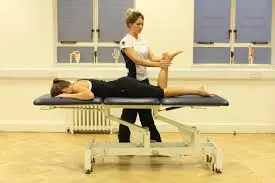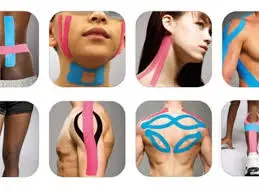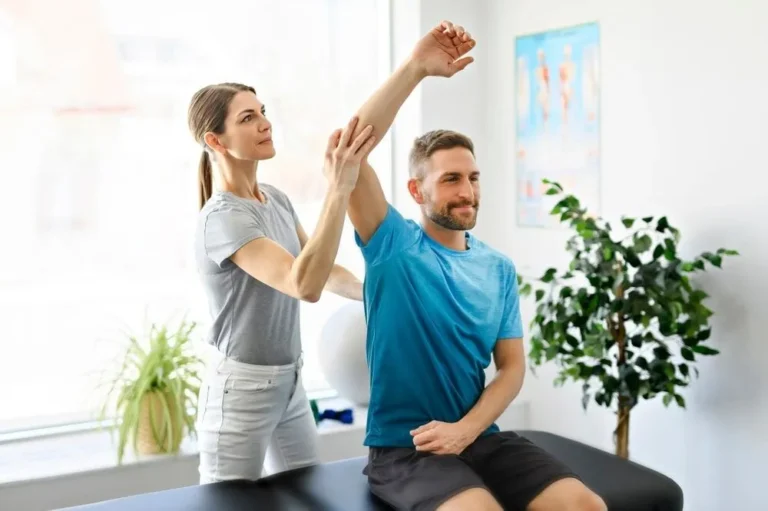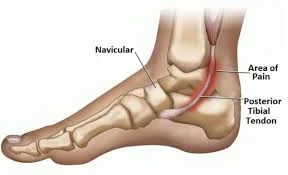Mulligan Concept – Manual Therapy
The Mulligan Concept, developed by New Zealand physiotherapist Brian Mulligan, is a manual therapy approach used to treat musculoskeletal pain and dysfunction. This method focuses on the application of Mobilizations with Movement (MWM) and Sustained Natural Apophyseal Glides (SNAGs) to restore pain-free function and improve joint mobility.
Description
- NAGS- Natural Apophyseal Glides.
- SNAGS – Sustained Natural Apophyseal Glides.
- MWMS- Mobilization with Movements.
Concept of Positional Fault
Mulligan suggested that sprains or injuries may cause a small “positional fault” in a joint, limiting its natural range of motion. The methods were created to address “positional faults” or joint “tracking” issues caused by minor biomechanical alterations in the joints.
Normal joints allow free but controlled movement while minimizing the compressive forces caused by that movement. This is accomplished by the articular surfaces’ form, the cartilage’s thickness, the ligaments and capsule’s fiber orientation, and the direction of pull of the muscles and tendons.
This balance is preserved by normal proprioceptive feedback. Any modification to one or more of the elements above would affect the tracking or location of the joints during motion, resulting in pain, stiffness, or weakness in the patient. Therefore, it makes sense that a therapist would try to realign the joint surfaces in the least invasive manner possible.
Principles of Treatment
In following Kaltenborn’s ideas, a passive accessory joint mobilization is used. The slide of this attachment itself needs to be painless. The therapist will recognize one or more such signals as stated by Maitland during the assessment process. These symptoms could include pain when moving, during certain functional activities, or decreased joint mobility.
To make sure that no pain is relieved, the therapist must constantly assess the patient’s response. The patient is asked to make a similar sign while maintaining the accessory movement. Now, the equivalent sign ought to be noticeably better.
The therapist might not have selected the right treatment plane, mobilization grade, spinal segment, or technique if a comparable indication does not get better.
- P- Pain-free.
- I- Instant result.
- LL- Long Lasting.
It is not advisable to support that technique if there is no PILL reaction. CROCKS is the second principle.
- C: Contraindications (none of which include a PILL reaction)
- R: Repetitions (limited to three sets each day)
- O- Overpressure
- C- Communications
- K: Knowledge (of diseases and treatment modalities)
- S- Sustain the mobilization throughout the movement.
Techniques
SNAGs
Sustained Natural Apophyseal Glides are referred to as SNAGs.
All of the spinal joints, the rib cage, and the sacroiliac joint can all benefit from SNAG application.
As the patient executes the symptomatic movement, the therapist applies the proper accessory zygapophyseal glide. This needs to produce pain-free, full-range mobility.
SNAGs are effective when symptoms are movement-induced and uniform.
When things are extremely irritable, they are not the best option.
Headache SNAG
Application:
Position the left thenar eminence’s lateral border over your right little finger.
(Your left arm uses the thenar eminence over the little finger on the spine of C2 to provide the incredibly light movement force needed to do this).
This is rapidly moved forward until the end range is perceived, and it stays in this position for ten seconds or longer. When the position is maintained for an extended period—up to a minute—some people respond better.
Importantly, a skilled manual therapist will gently vary the glide’s direction to bring about a shift when using the “Headache SNAG” Since each person has a different real facet plane direction, slight direction modifications can be required.
NAGs
The code word for “Natural Apophyseal Glides” is NAGs. For the cervical and upper thoracic spine, NAGs are utilized. They can be used on the facet joints between the second cervical and third thoracic vertebrae and involve oscillatory mobilizations rather than sustained glides like SNAGs. Helpful for severely limited spinal motion.
NAGs are the preferred course of treatment for extremely irritated situations
Peripheral MWM
- An acceptable glide is selected when the movement that irritates the person is determined.
- The choice between using weight-bearing and non-weight-bearing movement is based on the condition’s severity, irritation, and type.
- The mobilizations are always done in a pain-free but resistant manner.
- Improvement in range of motion and rapid pain alleviation are anticipated.
- If you don’t get this, try changing the glide parameters.
Spinal Mobilization with Limb Movement (SMWLMs)
- Here, the patient simultaneously extends the limb’s previously limited range of motion and applies transverse pressure to the side of the relevant spinous process.
- This does not necessarily indicate a breakdown of the nervous system because spinal movement is required when a limb goes past a specific point.
- Therefore, the method removes a mechanical and structural limitation on the spine, but it may also have neurological effects.
How does the Mulligan concept help?
The Mulligan approach involves precisely targeted spinal mobilizations while the patient is bearing weight. Increasing the spine’s and affected limbs’ pain-free range of motion is the goal of these mobilizations. Until this goal is met, the mobilizations are repeated.
Who benefits from the Mulligan concept?
The Mulligan approach helps people who have back or neck pain that radiates to their limbs, including stiffness in the limbs, legs, and back or neck joints, decreased range of motion in the arms, legs, back, and neck, and pain in the arms, legs, back, or neck.
Conclusion
To sum up, the Mulligan Concept, often known as the manual therapy technique, is a very successful manual therapy strategy that uses movement and joint mobilization to reduce pain and increase the range of motion in various joints. This idea shows promise in treating multiple musculoskeletal disorders by improving joint mechanics and correcting minor positional mistakes. For patients seeking manual therapy options, the Mulligan Concept greatly improves the range of motion, reduces pain, and enhances the quality of life when used by trained healthcare practitioners.
Through applying the Mulligan Concept in a thorough rehabilitation program, patients can achieve better results and return to full function. For individualized therapy and care, think about speaking with a licensed physical therapist who has been trained in the Mulligan Concept if you’re having problems moving around or experiencing musculoskeletal pain. Your recovery process may benefit from their skill and execution of this strategy.
FAQ
What is the Mulligan manual therapy technique?
The Mulligan approach involves precisely targeted spinal mobilizations while the patient is bearing weight. Increasing the spine’s and affected limbs’ pain-free range of motion is the goal of these mobilizations. Until this goal is met, the mobilizations are repeated.
References
- Mulligan Concept – Manual Therapy – Physiotherapy – Treatments – Physio.co.uk. (n.d.). https://www.physio.co.uk/treatments/physiotherapy/manual-therapy/mulligan-concept.php
- Mulligans Therapy | Manual Mulligan Technique. (n.d.). https://www.saaolorthocare.com/manual-therapy-mulligan







